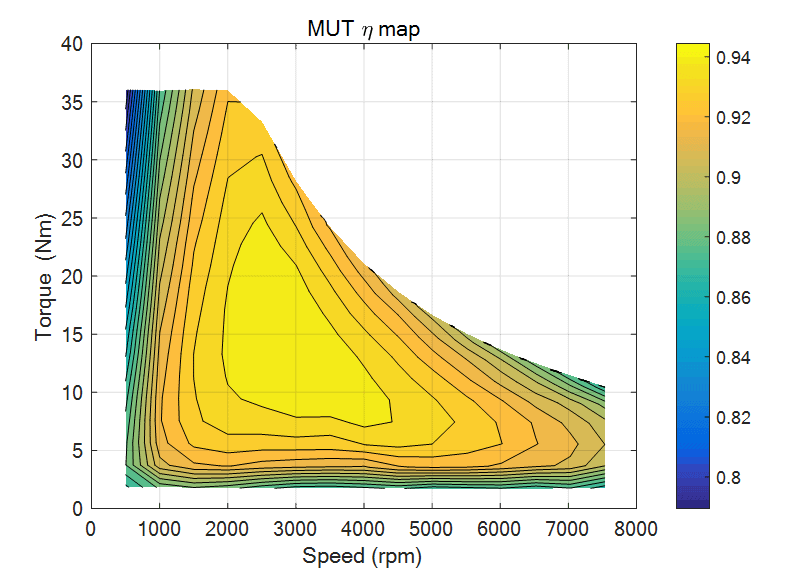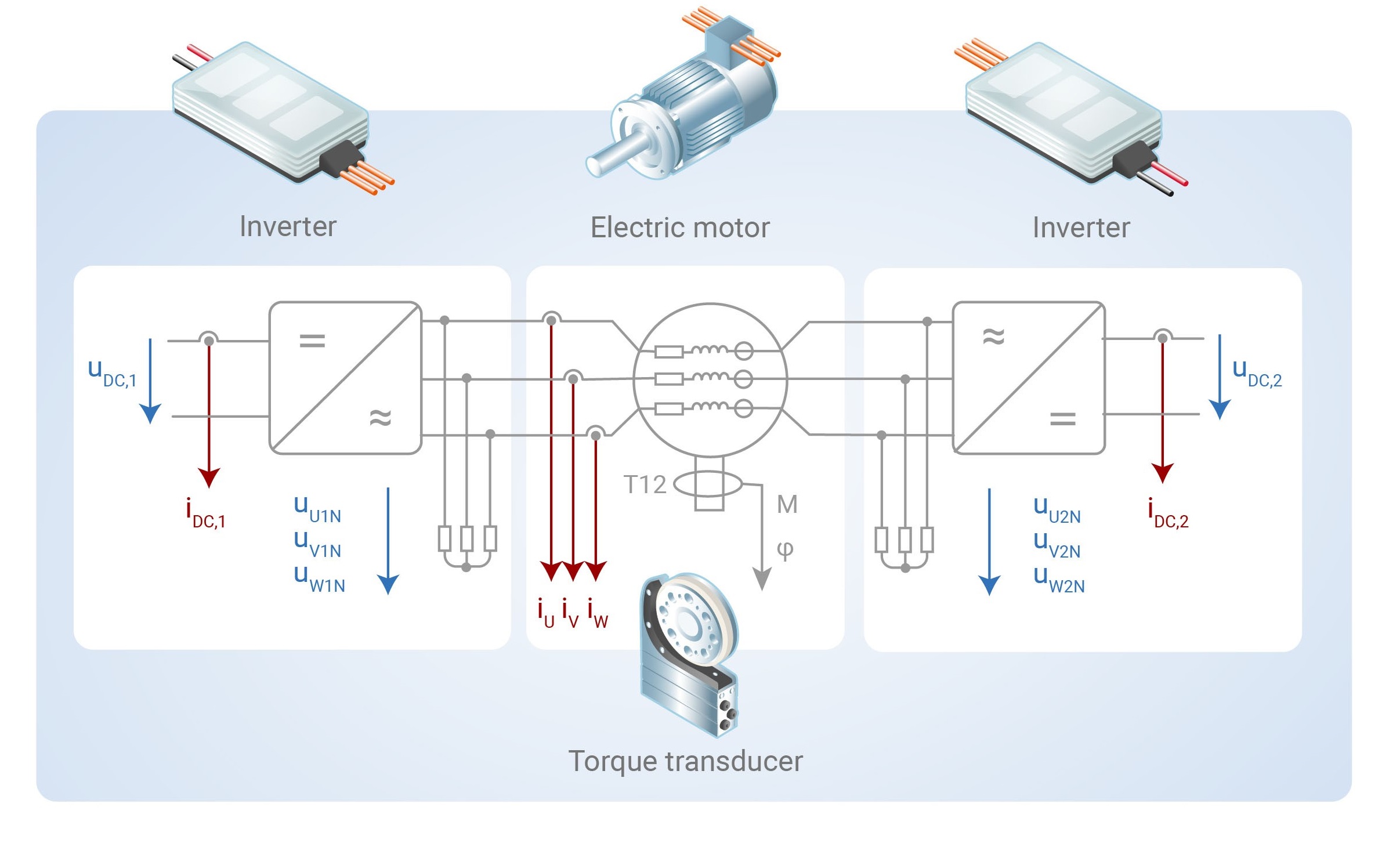HBM’s End-to-End e-Mobility Solution
HBM’s testing solutions for electric drivetrains use the so-called “cycle detect” technology to make efficiency mapping ten times faster. By accelerating the measurement time for individual set points to the range 0,5 to 1 second, the production of multi-dimensional efficiency maps can be cut from weeks to days or even hours. Since the raw data are available at any time, the engineer can reference previous tests if anything goes wrong – without needing to re-run the test series.
Another important factor comes into play here - accuracy: To achieve reasonable measurement uncertainty for derived values such as power loss or efficiency, only the most accurate power analyzer and the most accurate sensors will be good enough. Consider an inverter with a rated power of 500 kW input and 475 kW output which equals a loss of 25 kW. If the measurement chain error is 1%, the measured values are +/- 5 kW input, +/-4.75 kW output, giving a cumulative measurement uncertainty for energy losses of +/-9.75 kW – the cumulative measurement uncertainty of 39% is far from satisfactory. If, however, the measurement chain error is 0.1%, cumulative measurement uncertainty for the power loss is 3.9%. Obviously, the more accurate the equipment, the more reliable the test results, and the more meaningful the insights on motor calibration will be.
HBM’s high-precision Power Analyzer is complemented by a range of sensors for measuring voltage, current, torque/speed with best-in-class accuracy ratings and the highest safety standards. They are certified for e-drive test systems and perfectly blend into the GENESIS HighSpeed hardware for an integral solution.
A testing solution like HBM’s that continuously and reliably captures, stores, correlates, processes, and visualizes these data is indispensable to ensure fast, valid, auditable testing. Customized trainings, either on the HBM premises or at the customer’s site, ensure a speedy onboarding process. For training at the customer’s own leisure, a suite of self-learning courses are available at the HBM website or via the Internet. Our highly skilled engineers stand by to assist with knowledge transfer, system integration support and a suite of other services around the HBM electric motor testing solution.







